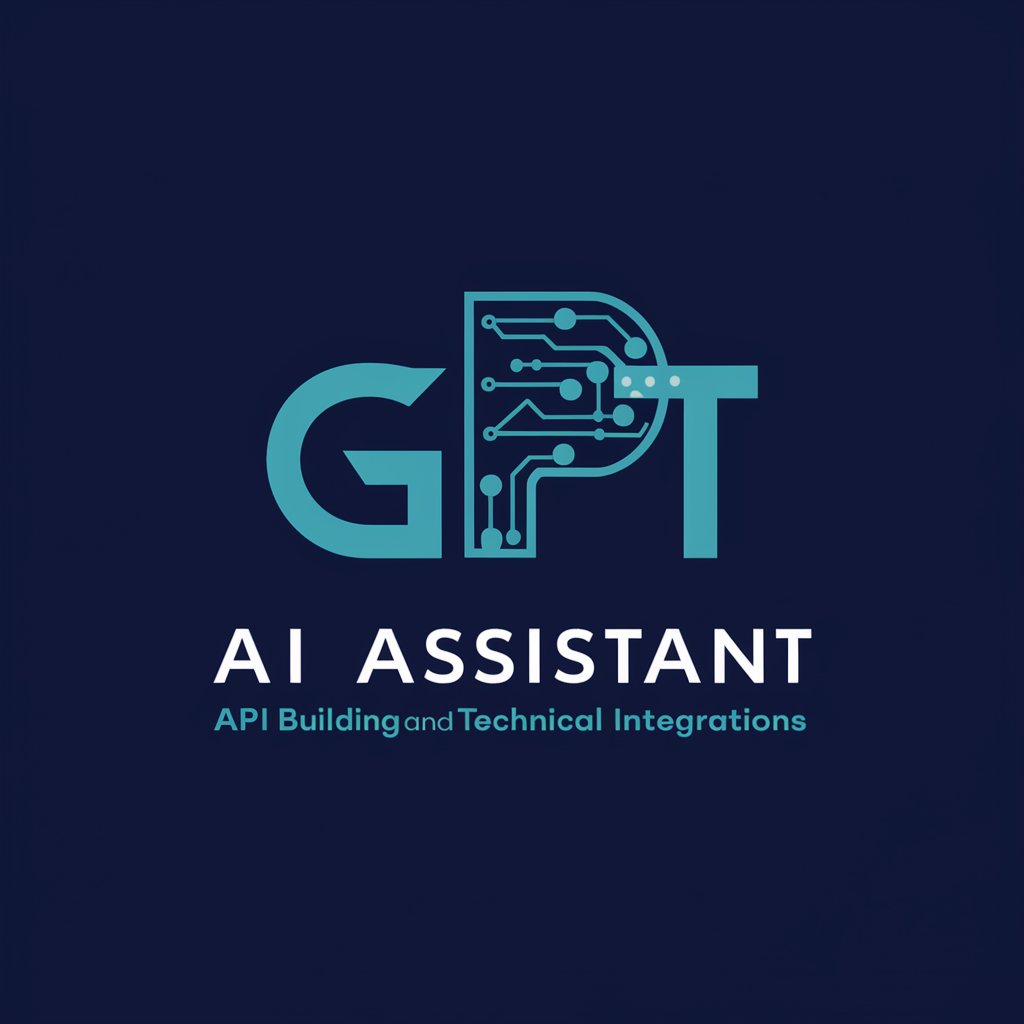
FastAPI-blazing-fast Python API builder
AI-powered API framework for Python speed

Your personal Fast API assistant and code generator with a focus on responsive, efficient, and scalable projects. Write clean code and become a much faster developer.
🚀 Create a simple CRUD app with FastAPI
🔎 Create a real-time chat app with FastAPI
🪲 Find any bug or improvement in my code
💡 Teach me a useful skill or trick in FastAPI
Get Embed Code
What is FastAPI and Why Was It Created?
FastAPI is a modern, high-performance web framework for building APIs with Python 3.7+ based on standard Python type hints. It was created by Sebastián Ramírez with the goal of combining developer efficiency, performance, and standardization. FastAPI stands out for its focus on speed — both at runtime (using Starlette and Pydantic under the hood) and during development, thanks to automatic documentation and data validation. FastAPI is designed around the OpenAPI (formerly Swagger) specification and JSON Schema, which means it automatically generates interactive documentation (Swagger UI and ReDoc). Its type-driven approach ensures robust and predictable code, enabling features like data validation, serialization, and IDE support (e.g., autocompletion and type checks). **Example Scenario**: Imagine you're building an API for a mobile banking app. You need to create endpoints for user login, balance retrieval, and transaction history.FastAPI Overview and Use Cases With FastAPI, you can: - Validate incoming JSON bodies (e.g., login credentials) - Serialize and return data models (e.g., transaction data) - Auto-document the entire API for frontend and QA teams without extra work All with minimal boilerplate, high performance, and clear type annotations.
Core Functionalities of FastAPI in Real-World Contexts
Automatic Request Validation & Parsing
Example
@app.post('/items/') def create_item(item: Item): return item
Scenario
A retail company building an inventory management system can use FastAPI to automatically validate the structure of incoming item data (e.g., name, price, quantity). This eliminates manual JSON parsing and ensures API clients send valid data structures.
Interactive API Documentation (Swagger UI, ReDoc)
Example
Open http://localhost:8000/docs or /redoc after running a FastAPI app.
Scenario
A fintech startup with multiple frontend teams can use the auto-generated Swagger UI to test API endpoints in real-time. This facilitates QA testing, allows frontend devs to test integration, and supports business teams in understanding the API without needing Postman or custom docs.
Dependency Injection System
Example
def get_current_user(token: str = Depends(oauth2_scheme)): return User(token)
Scenario
A healthcare application with strict authentication protocols can use FastAPI's dependency injection to enforce auth checks, rate limiting, or logging across endpoints — without repetitive code. This leads to cleaner architecture and easier maintenance.
Who Should Use FastAPI?
Backend Developers and API Engineers
Developers building REST or GraphQL APIs benefit from FastAPI’s automatic validation, async support, and clean syntax. Teams can move quickly with fewer bugs, leveraging Python’s type system and powerful error handling to build stable, well-documented APIs.
Data Scientists and ML Engineers Deploying Models
FastAPI is ideal for ML engineers who need to expose trained models as APIs. Thanks to its async capabilities and native JSON handling, it's easy to wrap models with prediction endpoints, validate input types, and deploy lightweight inference services — even with Docker or serverless platforms like AWS Lambda.
How to Use FastAPIFastAPI Detailed Guide in 5 Clear Steps
Step 1: Get Instant Access
Visit aichatonline.org for a free trial without login, also no need for ChatGPT Plus. This gives you access to a powerful AI assistant that can help you build and troubleshoot FastAPI applications.
Step 2: Install Prerequisites
Make sure Python 3.8+ is installed. Then use `pip install fastapi[all]` to install FastAPI along with Uvicorn (ASGI server), Pydantic, and optional dependencies like Jinja2 for templating.
Step 3: Create Your First App
Create a `main.py` file and define your API using Python functions and decorators like `@app.get('/')`. Use Pydantic models for request/response validation. Run it using `uvicorn main:app --reload`.
Step 4: Explore the Auto Docs
FastAPI automatically generates interactive documentation at `/docs` (Swagger UI) and `/redoc`. Use these to test endpointsFastAPI Usage Guide, view schema definitions, and debug API contracts.
Step 5: Optimize for Production
Use dependency injection, async endpoints, and background tasks. Set up CORS, OAuth2/JWT for auth, and consider Docker + Gunicorn + UvicornWorker for deployment in production environments.
Try other advanced and practical GPTs
Jornalista Br
AI-powered news writing, Brazilian style

Seedling Content Method
AI-powered website content, done right.

Information Technology Consultant
AI-powered insights for smarter IT decisions

Guided [Audio!] Meditations and Mindfulness
AI-Powered Meditation for Mindful Living
![Guided [Audio!] Meditations and Mindfulness](https://files.oaiusercontent.com/file-GK6suvFlvoDDq25DW4XWNN8q?se=2124-04-25T20%3A37%3A44Z&sp=r&sv=2023-11-03&sr=b&rscc=max-age%3D1209600%2C%20immutable&rscd=attachment%3B%20filename%3D37da8be9-305d-4a38-a8a4-6a670788be8d%2520copy.jpg&sig=PjBeEf1zMKHDj4vxUM/ZCKRVlji6VETy1SVN/vixtas%3D)
Logo Oluşturucu
Create professional logos with AI

soft-chandler
AI-powered depth for every query

GPT Periodista
AI-powered tool for professional newswriting
Astrocartography
AI-powered Astrocartography for better decision-making.

Unity Copilot
AI-powered Unity assistant for coders & creators

Meta Prompt Lendário
AI-powered prompt builder for detailed outputs

French/Spanish Translator/Interpreter
AI-driven translation from French to Spanish

EarthMap - Geography Facts, Maps and Images
AI-powered explorer for global geography

- Microservices
- API Development
- Async Programming
- Data Validation
- WebSockets
Top 5 Expert-Level Q&A on FastAPI
What makes FastAPI faster than Flask or Django?
FastAPI is built on Starlette (ASGI) and uses Python’s `asyncio` to support non-blocking code execution. Combined with Pydantic for fast data validation, it dramatically reduces latency, especially under high concurrency.
Can FastAPI handle real-time data or WebSockets?
Yes, FastAPI natively supports WebSockets via Starlette. You can build chat systems, real-time dashboards, or notification services using `@app.websocket('/ws')` endpoints and async loops.
How do I secure a FastAPI application?
Use OAuth2 with JWT tokens for authentication, add CORS middleware to control cross-origin access, and manage secrets through environment variables. FastAPI’s dependency injection simplifies these integrations.
What is the role of Pydantic in FastAPI?
Pydantic models are used for both data validation and serialization. Request bodies, path/query parameters, and response schemas are all validated automatically, reducing boilerplate and runtime errors.
How does FastAPI scale in microservice architecture?
FastAPI is designed for microservices. It integrates easily with Docker, Kubernetes, and message queues like RabbitMQ. It supports async tasks, service-to-service authentication, and lightweight APIs ideal for containerized deployments.






